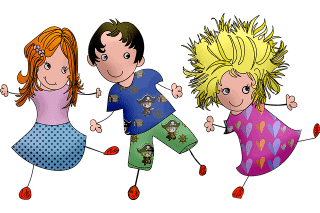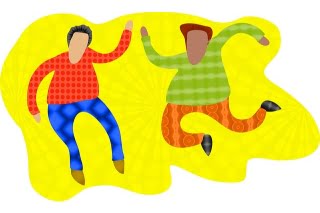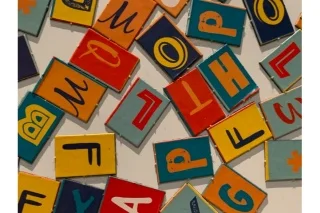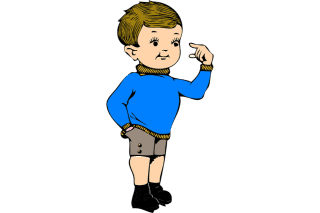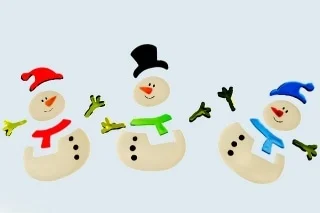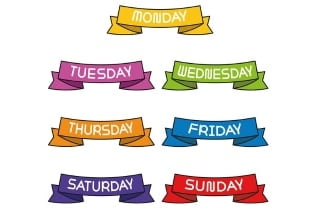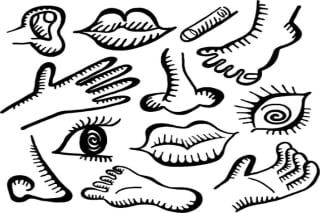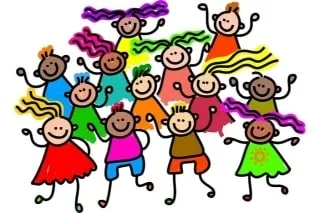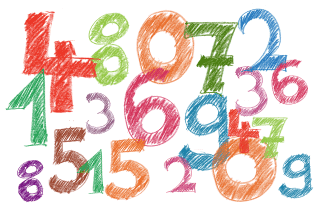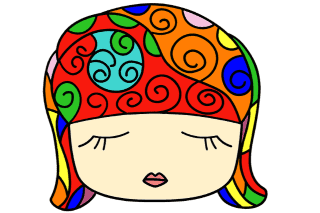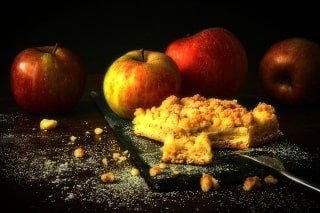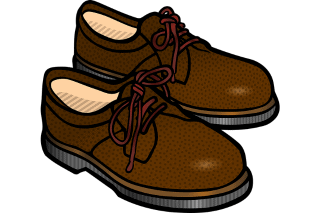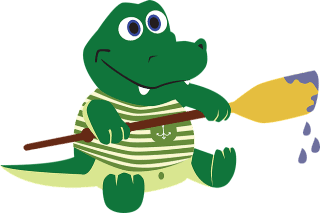
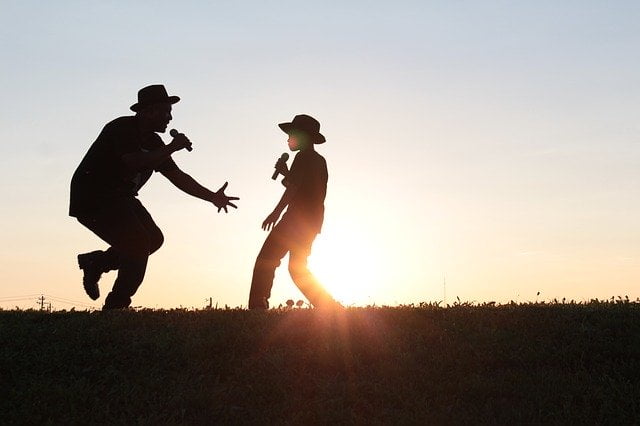
Dance to Your Daddy
“Dance to Your Daddy“or “When the Boat Comes In” is a traditional English folk song from North-East England. This rhyme first published in 1849 in “Songs of the bards of the Tyne” by Joseph Robson, and these lyrics were written by William Watson around 1826.
It became popular when it was used as the theme tune of a TV series in 1970 on BBC, also called “When the Boat Comes In”. It has also featured in a TV advertisement for fish products.
The lyrics from traditional version of the song, used by the TV series, differ significantly from those of the TV advertisement. There are really too many variations of the lyrics, so we have collected for you the most common verses.
“Dance to Your Daddy” nursery rhyme has been passed down through generations of families and is still popular today. The rhyme tells the story of a father and his child dancing together and is often accompanied by hand gestures and actions.
“Dance to Your Daddy” Lyrics
Dance to your Daddy, my little laddie
Dance to your Daddy my little man
Dance to your Daddy sing to your mommy
Dance to your Daddy my little man
You shall have a fishy on a little dishy
You shall have a fishy when the boat comes in
You shall have a herring on a little dishy
You shall have a herring when the boat comes in
Come here me little Jacky
Now aw’ve smoked mi backy
Have a bit o’ cracky
Till the boat comes in
Dance to your Daddy sing to your mammy
Dance to your Daddy my little man
You shall have a fishy on a little dishy
You shall have a fishy when the boat comes in
You shall have a mackerel on a little dishy
You shall have a mackerel when the boat comes in
Dance to your Daddy my little laddie
Dance to your Daddy my little man
Dance to your Daddy sing to your mommy
Dance to your Daddy my little man
You shall have a fishy on a little dishy
You shall have a fishy when the boat comes in
You shall have a herring on a little dishy
You shall have a herring when the boat comes in
“Dance to Your Daddy” Traditional Lyrics
Come here, my little Jacky
Now I’ve smoked my backey
Let’s have a bit crackey
Till the boat comes in
Chorus:
Dance to thy daddy, sing to thy mammy,
Dance to thy daddy, to thy mammy sing;
Thou shalt have a fishy on a little dishy,
Thou shalt have a fishy when the boat comes in.
Here’s thy mother humming,
Like a canny woman;
Yonder comes thy father,
Drunk – he cannot stand.
Chorus
Our Tommy’s always fuddling,
He’s so fond of ale,
But he’s kind to me,
I hope he’ll never fail.
Chorus
I like a drop mysel’,
When I can get it sly,
And thou, my bonny bairn,
Will lik’t as well as I.
Chorus
May we get a drop,
Oft as we stand in need;
And weel may the keel row
That brings the bairns their bread.
Chorus
Here’s another version:
Dance to your daddy
My bonny laddy,
Dance to your ninny,
My sweet lamb;
You shall have a fishy
In a little dishy,
And a whirligiggy,
And some nice jam.
Dance to your daddy
My bonny laddy,
Dance to your ninny,
My sweet lamb;
You shall have a fishy
In a little dishy,
And a whirligiggy,
And some nice jam
.
Bonny = beautiful, pleasant-looking, smiling
Laddie = young boy
Ninny = child
Whirligiggy = whirligig = a twirling or whirling toy (like a top).
- dance to your daddy nursery rhyme
- dance to your daddy lullaby song
- thou shalt have a fishy lyrics
- you shall have a fishy lyrics
- little fishy on a little dishy
Frequently asked questions (FAQ's) based on “Dance to Your Daddy”
Answer : The lyricist of this rhyme was William Watson around 1826.
Answer : This rhyme was written in English language.
Answer : This rhyme was firstly published in “Songs of the bards of the Tyne” by Joseph Robson.
Answer : This rhyme was firstly published in 1849.
Answer : This rhyme became most popular when it was used as the theme tune of a TV series in 1970 on BBC.
Answer : Dance to Your Daddy sometimes known as “When the Boat Comes In”.
Answer : This is a traditional English folk song from North-East England so it is very popular North-East England.
- thou shalt have a fishy lyrics
- you shall have a fishy lyrics
- little fishy on a little dishy
Some more details based on “Dance to Your Daddy”
The “Dance to Your Daddy” rhyme is designed to be sung as a lullaby and has a soothing and comforting tone. The lyrics describe a father and his child dancing together and the promise of a fishy treat when the boat comes in. The rhyme has a simple yet charming melody that makes it easy to sing along to, and the hand gestures and actions associated with the rhyme help to engage young children and develop their cognitive and motor skills.
The origin of the rhyme is unclear, but it is believed to have originated in the north of England in the 19th century. The rhyme is often associated with the maritime heritage of the region and is believed to have been sung by fishermen and their families.
Despite its origins as a lullaby, it has been adapted and recorded in various forms, including as a song and a dance. It has also become a popular cultural reference in literature, music, and film, and has been featured in works by authors such as D.H. Lawrence and J.K. Rowling.
Overall, “Dance to Your Daddy” is a timeless nursery rhyme that continues to be enjoyed by generations of children and adults alike. Its simple yet charming melody, engaging hand gestures and actions, and comforting lyrics make it a beloved and enduring part of English folklore.
- dance to your daddy nursery rhyme
- dance to your daddy lullaby song
- thou shalt have a fishy lyrics
- you shall have a fishy lyrics
- little fishy on a little dishy
Some activities for children's based on "Dance to Your Daddy"
- Daddy and Me Portraits: Provide the children with art materials such as paper, markers, and crayons, and have them draw a portrait of themselves with their daddy or another important caregiver. Encourage them to talk about their relationship and how they like to spend time together.
Note: This activity promotes creativity and fine motor skills. It also helps with language development and family bonding.
- Dance Exploration: Play a variety of different types of music and encourage the children to explore different dance movements such as jumping, twirling, and spinning. Talk about the different emotions and feelings that the music can evoke and how they can express themselves through dance.
Note: This activity promotes physical activity and self-expression. It also encourages creativity and helps with emotional development.
- Daddy Interview: Have the children interview their daddies about their favorite childhood memories, hobbies, and interests. Then, have them share their findings with the group. This can be done in a variety of ways, such as through a class discussion, a show-and-tell presentation, or a group art project.
Note: This activity promotes communication and language development. It also helps children understand their fathers better and strengthens family bonds as everyone shares their own unique experiences and memories..
Related links
Categories
Other popular rhymes
Other related keywords and search's
- dance to your daddy nursery rhyme
- dance to your daddy lullaby song
- dance to your daddy meaning
- nursery rhymes dance to your daddy
- dance to your daddy my little laddie lyrics
- dance to your daddy mother goose
- dance to your daddy poem lyrics
- dance to your daddy song
- dance to your daddy poem summary
- dance to your daddy lyrics in english
- dance to your daddy rhyme full original lyrics




